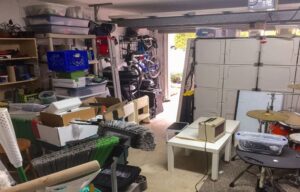What Are The Keys To Cleaning All Types Of Floors Without Damaging Them?
Having a clean floor, without dust or dirt, is essential in a house. It is a domestic task to which we must give particular importance. To do this, we must know how each type of floor should be cleaned, depending on the material with which it is made.
We have made a brief review of the panorama of the most common flooring in today’s houses to give you the keys to achieving a clean and perfect floor.
To each material, its treatment
It is, without a doubt, the critical aspect that makes the difference in how we should act when cleaning the floors of our house. It is not the same that these are made of wood or stoneware, marble or polished cement.
We must give each type of floor special attention, and although the way of cleaning may seem similar, there are fundamental differences that must be considered. Choosing the proper utensils, opting for quality products and not subjecting the floor to aggressive treatments are the basic rules of action.

Sweep or vacuum?
This is the first big question you should ask yourself when you ask yourself if you are cleaning the floors in your house correctly. We will start on the basis that either of these two cleaning actions can achieve the expected results. However, it is worth taking into account the pros and cons of both to choose the best one in each case.
Using a broom to sweep the floor of the house has some drawbacks. It is indeed an inexpensive tool, but it is unhygienic since it manages to raise a lot of dust when cleaning floors with some dirt. Although it can pick up the most apparent dirt, it is not as effective at trapping minor dust and lint.
On the contrary, the vacuum cleaner is much more effective. It is a complete tool for cleaning all types of floors, although it may be more expensive and requires an initial investment. For delicate floors such as wood, for example, it is essential to have a special brush (most vacuum cleaners come with one). The vacuum cleaner is also the best for cleaning carpets and rugs.
Robot vacuum cleaners are an attractive ally.
Many people doubt whether getting a robot vacuum cleaner to clean the floor for us is a good idea or not. Although it has its advantages and disadvantages, the truth is that robot vacuum cleaners are efficient in certain circumstances.
One of the most important things is to choose a suitable model for your home. Some robots vacuum, scrub the floor and polish it with the built-in mop. The diversity of models and features is so vast that it is easy to get lost. Opt for a vacuum cleaner capable of “analysing” the floor and focusing on the dirtiest areas that require further cleaning.
Choosing the best mops and mops
They are essential tools for cleaning the floor and keeping it impeccable. In addition to having a good vacuum cleaner, you will need mops and mops to complete the cleaning, so it is convenient to know which ones are the best.
As far as the mop is concerned, leave aside the ones with cotton strings since they accumulate more water and are more difficult to wring out. Opt for microfiber or suede mops, which absorb less water and wring better, for floors that shouldn’t get too wet.
As for the mop, please choose a model with a metal structure, as it will be much more resistant than the plastic ones. The textile accessory is better if it is made of cotton, soft and delicate with the surface, and capable of picking up dirt from the floor.
The optimal care for wooden floors
They are warm and very decorative, although they are also quite delicate when cleaning as they scratch easily. However, if you treat them properly, their maintenance will not be a problem, and you will ensure they are always impeccable.
The vacuum cleaner is the best tool to remove dust and grit from wooden floors; always equipped with the correct brush so as not to scratch the surface. With the broom or the sweeping brush, it is easy to cross the floor.
On the other hand, wooden floors should not be scrubbed excessively, as wood and water do not get along very well. Rub them with water and a specific soap for wood once every two or three weeks, wringing out the mop as much as possible (better microfiber) so as not to soak it.
One piece of advice: avoid using vinegar when cleaning wooden floors. Although you have heard that it achieves good results, the truth is that the acetic acid in the vinegar ends up dulling the shine of the wood. Also, do not use commercial products with waxes or silicones.
Cleaning laminate and vinyl floors
Although they are different, laminate and vinyl floors can be cleaned similarly. Both are very resistant, with the particularity that vinyl flooring is also capable of withstanding humidity and splashes of water without problems.
Vacuum these floors and scrub them afterwards with water and neutral soap. It is best to avoid specific commercial products since an excellent neutral soap will achieve similar results without damaging the surface. Finish by drying the laminates and vinyl with a soft mop.
How to clean ceramic and stoneware floors
These are the most accessible floors to clean, as they are resistant and do not deteriorate quickly. In addition to vacuuming or sweeping to collect dirt, you should scrub them with a good cleaner, avoiding aggressive products.
Stoneware floors can get wet without any problem, so they are perfect for kitchens and bathrooms, where mopping becomes a daily task. In areas such as the kitchen, where grease stains can occur very frequently, it is a good idea to scrub the stoneware floor with water, ammonia and a splash of dish soap. This mixture is degreasing and will leave your bed completely clean.
One piece of advice: you can clean the joints between the tiles by rubbing with a brush and bleach diluted in water.
The perfect treatment for marble floors
Marble floors need frequent and thorough cleaning to prevent dirt from accumulating. To clean it, start by vacuuming or sweeping to collect dust, then scrub them with warm water and neutral soap. It is not advisable to wet the marble excessively.
The most complicated thing is to get rid of the stains on the marble when they occur. It is advisable to act as soon as possible to prevent dirt from penetrating. If your floor is white, you can try to remove the stains with pure hydrogen peroxide, rubbing and then rinsing with water.
Another homemade solution is to rub with half a lemon, rinse with clean water, and dry. If the dirt is excessive and the stains do not come out, rub with bleach diluted in water, rinse and dry the floor afterwards.
A tip: on black marble floors, do not use vinegar, lemon or any other acidic substance that can spoil the colour.
Keys to keeping the cement polished
If you are a fan of industrial and contemporary environments, you will like polished cement flooring. They boast various colours and finishes, making them an exciting option.
In addition to being beautiful, they are resistant and easy to clean. After vacuuming or passing them with a clean and dry mop, you can scrub them with water and neutral soap, rinse afterwards and dry them. The rinsing process with clean water is critical in this case since the residues left by soaps and cleaners can take away the shine of the polished cement.
Avoid using bleach, ammonia, and any other strong cleaners. Don’t use oil-based products either: they leave a film on the floor’s surface that will attract more dirt.
One piece of advice: polished concrete floors have a protective layer that makes them non-porous. Do not forget to renew this treatment from time to time.
Terrazzo floors are always impeccable.
Terrazzo is back. Although reinvented, it is a trend again, so it is convenient to learn how to clean it properly. It is a resistant and easy to maintain material. After removing the dust, you can scrub it with soap and water.
Being polished, the terrazzo is not very porous. If stains occur, clean them with a specific product for terrazzo. If you want to preserve its shine, add a bit of liquid terrazzo wax to the dishwater from time to time.



Average Rating